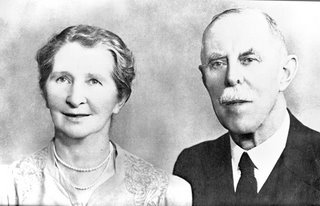 Theological Principles
Theological PrinciplesIn the last few postings I have discussed one of F W Boreham’s major themes, ‘Vision for the Ordinary’. While some of the theological perspectives have been alluded to I want to examine in the next few articles some of the theology underpinning this theme.
Vision and the Visual
The importance of Boreham’s theme on vision is highlighted by Melbourne writer David Tacey, when writing about contemporary Australia, “It is little wonder our traditional religions have been declining, for they have lost the spiritual vision that is needed to track the sacred in the present and to bring the spirit into living focus”.[1]
Similarly, Frank Fletcher, drawing upon the Ghanaian experience, argued that the growth or decline in Christian faith around the world has been largely reflective of the extent to which the primal and sacral imagination has been encouraged or repressed.[2]
The Cultured Eye
Boreham stressed the importance of the visual in developing an imagination that encounters the spiritual realm. His encouragement to a new way of looking was similar to Rufus Jones’ call for a “cultured eye”, which requires reflection and rumination more than embarking on a cerebral exercise. The descriptions of Boreham’s observations of ordinary things hint at more than receiving a photographic imprint. Such experiences have a powerful effect on the observer and are expressed well in Dillard’s testimony that “it was less like seeing than like being for the first time seen”.[3]
Geoff Pound
Image: ‘Receiving a photographic imprint.' A photographic imprint of Stella and Frank Boreham
[1] David Tacey, Re-enchantment: The new Australian spirituality (Sydney: HarperCollins, 2000), 241.
[2] Frank Fletcher, ‘Towards a contemporary Australian retrieval of sacral imagination and sacramentality’, Pacifica 13 (2000): 1.
[3] A Dillard, Pilgrim at Tinker creek, 35.


